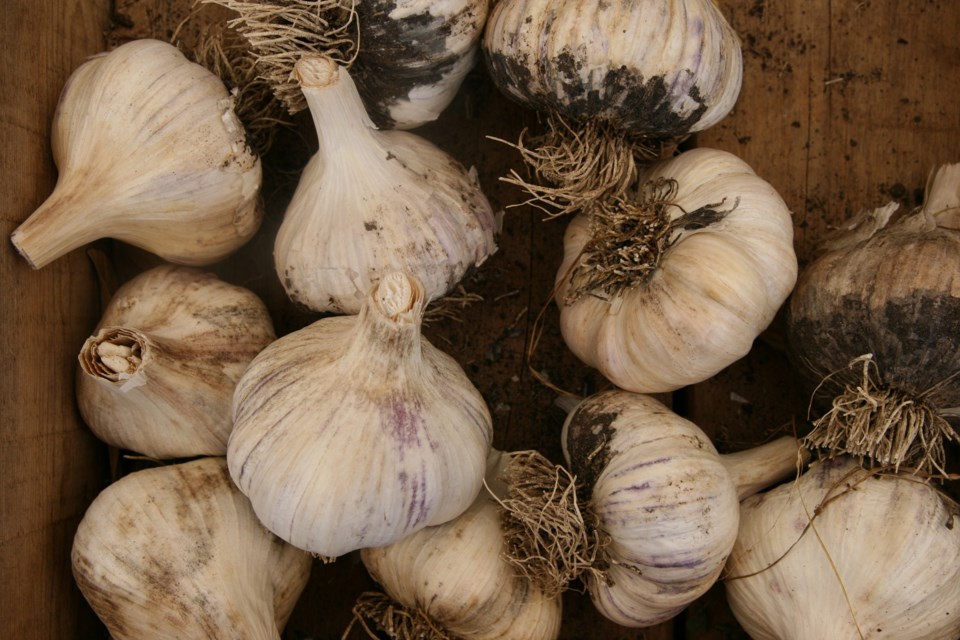Autumn has descended. The trees are changing colours and dropping leaves, and cooler temperatures are upon us.
Here at the farm the winter squash have been harvested and are curing in the hoop house, the potatoes for winter storage are almost all harvested, and I’m patiently waiting for the first frost to sweeten my storage carrots before harvesting those for winter storage. Cleaning up the garden beds and planting the garlic are the last major tasks of the season.
Once night time temperatures on the North Shore dip below 10 degrees, your tomatoes will not continue to ripen well on the vine. You can pick all those remaining green tomatoes, pack them into cardboard boxes with newspaper to prevent tomatoes touching, and bring inside to finish ripening.
I’ve also heard of people having success cutting whole tomato plants at the base of the stem, and hanging in their garage or a cupboard to “vine” ripen. When I bring in green tomatoes to ripen indoors I sort them by colour (dark green, white green, red shoulders) because when they’re at a similar stage in colour development they also tend to ripen fully at the same time.
Garden cleanup is important because it gives you a chance to tidy things up for a fresh start next spring, and continue to improve your soils.
You can either pull out plants that are finished for the season, or cut them at the base of the stem. Some people prefer to leave the root balls in their soil to decompose over the winter and add more organic matter to the soil. This works well most of the time, but occasionally you’re going to have a stubborn kale or sunflower stalk/root ball that has not decomposed by the spring and may need to be pulled out. Chop up all the plant material that you take out of the garden into one or two inch pieces and put into your compost pile along with some dry leaves or straw.
This is also a great time to do a thorough weeding. Our mild winters mean that most weeds are not killed off over the winter, but go dormant and spring into vigorous action as soon as it starts to warm up.
You can get ahead of some of them by weeding now, and then laying a thick layer of mulch over your entire garden. It’s very important to mulch your garden before the winter – you do not want any bare soil left exposed until next spring.
The mulch will protect plants from cold temperatures, reduce erosion from rain, and will slowly decompose to improve soil structure and health. I aim for at least six to eight inches of mulch; dry leaves or straw are the best materials to use.
Try to have extra mulch on hand to top up your garden in December because by then the rain and wind will have compacted and/or blown away some of your mulch.
My fall mantra is, “collect leaves. Collect leaves. Collect leaves.”
If you know that you won’t get to mulching your garden, I would suggest not weeding it or cleaning out any of this season’s plant material. It’ll look messy, but at least your soil will be protected from the elements.
However, if you’re growing in a community garden plot double check the garden guidelines regarding end of season garden cleanup standards before going this route.
Garlic is a rewarding and relatively easy crop to grow. Plant a clove in October and by August the following year you will have a whole bulb of garlic to enjoy. Prepare a garden bed and amend it with compost or manure.
Plant garlic cloves with the pointy side up about two to three inches deep and six to eight inches apart. Cover your garlic bed with a healthy layer of mulch, and wait for these hardy plants to be the first to poke green shoots out of the ground next spring.
Happy gardening.
Emily Jubenvill grew up on the North Shore and is passionate about growing fresh organic food. She’s working on her organic farm and homestead in Enderby, B.C. You can reach her at [email protected] or on Instagram at emily.enderberry.



